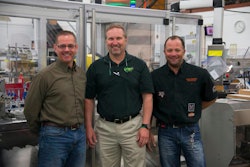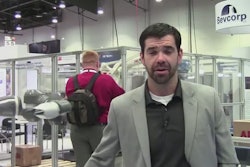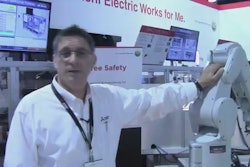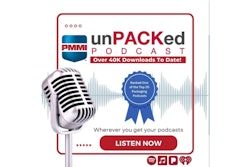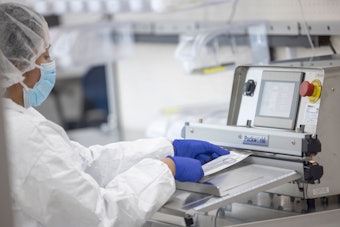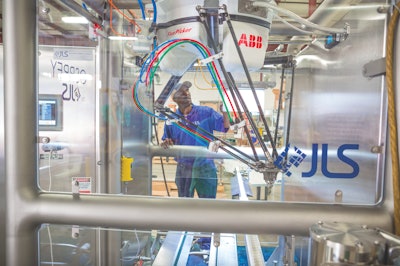
As is the case with many OEMs in the packaging and processing space, JLS Automation is a family business that has been handed down over generations. It evolved from beginnings as a manufacturers’ representative, into distribution, integration, and systems engineering. Within the last 15 years, it made the move from robotics integrator to become a full-blown equipment manufacturer, with expertise in robotics and automation.
Craig Souser, CEO, has been evolving with it, accelerating JLS to its current status since taking over shortly after the business incorporated in 1978. After a lifetime around the company, and a nearly 40-year career within it, Souser can’t point to a single lightning bolt moment that told him his business was where he wanted to be. But having reached the point of taking stock in what the company has evolved into, and finding areas of particular pride, he points to the people and culture as evidence of having succeeded.
“We’re not an asset-rich company in terms of facilities, machine tools, or fabrication ability. So, our real assets are our people,” Souser says. “That’s not new, but it’s more and more evident how important people are, especially their outlook, for the effectiveness of the company. I’m getting older and looking to leave my mark a bit, hoping to have a positive influence on people’s lives. There’s a bit of sentimentality with all this.”
A new attitude
As a high-tech company, JLS Automation has always aimed to hire the smartest people possible.
“I’d say intelligence and aptitude had long been the focus. We wanted people that were creative, that were innovators, think outside the box, all those semi-esoteric things, and we could find them,” Souser says. “But what we missed was we weren’t always finding people with the right attitude.”
Since, the company adopted an “Attitude above all” motto in new hires. It still aims at hiring the best pure talent, but recognizes that usually, aptitude can be trained.
“You can foster a positive attitude and nurture it, but I don’t think you can fundamentally change someone with a dim outlook,” he says. “Now, we have as talented a group as we have ever had. But more importantly, we have by far the best attitude, and it shows. We wanted the hyper-positive, high-energy, go-getter types on the sales team, and we got them. We’re going to probably more than double our performance over last year, in terms of bookings at least.”
 Engineering went through a similar change. In the past, the structure dictated that each project had a project manager alongside a lead engineer. The project manager was not only there to run the projects, but also to act as the face of JLS to the customer.
Engineering went through a similar change. In the past, the structure dictated that each project had a project manager alongside a lead engineer. The project manager was not only there to run the projects, but also to act as the face of JLS to the customer. “That’s a tricky position to fill, but one of the reasons we did it that way is we weren’t always comfortable with the lead engineer having that customer interaction,” Souser says. “We had an ongoing internal debate about the best model. I had always recommended we find folks who could be good engineers above all, because I thought finding people who are both good engineers, and can be the face of the company, was going to be too challenging. But I’ve been proven wrong on that one, and now we have a group of engineers who do just that.”
This new structure still includes a project manager, but the engineer is the point person for customer interaction. The company instituted a process around this structure to support the engineer, following documentation in the form of what the company calls an “action tracker.” Internally developed, this document is what Souser calls “an excel sheet on steroids.”
At the outset of a project, the JLS lead engineer will come up with a scope-of-work document describing the project. The action tracker follows execution of the steps needed to complete the job in the time allowed. The engineer will interact with the customer every week in online meetings discussing progress. These meetings could be as short as five minutes, and typically don’t last more than an hour. The key is that, except for rare instances where a sales person has to step in to nudge the customer, or the project manager has to step in to nudge the lead engineer, the bulk of the interaction happens between customer and engineer. Less is lost in translation this way, Souser says, it’s just a matter of finding the right engineers.
Moving from an aptitude to attitude focus when it comes to hiring seems to imply a greater need for training, but JLS hasn’t found that to be the case.
“We’re still hiring fundamentally smart people. That hasn’t changed. It’s just much more selective and much more of a focus on how they’ll work here,” Souser says. “It’s not just attitude, it’s chemistry. We have to really feel they’re going to fit here.”
Product development as continuous improvement
Product development at JLS is lead by customer requests and needs. Some are modifications to its existing offering, while others are ground-up designs. When coming up with ideas for new machines and market-testing them, JLS listens to the market. One reason it sells into other countries—namely Canada and Australia—is to see different requirements in different markets, and to see if new packaging materials and methods are going to impact the function of JLS machines. Following this path over the years, the product line has lengthened. The company was known for more standard case packers focused on being downstream of a thermoformer, but now has specific versions of it that are aimed at chub packs, and more recently, MAP (modified atmosphere packaging) tray lines.
Beyond the product evolution, there lies an internal metamorphosis that affects how the company goes to market. JLS Automation has and continues to describe itself as an engineering and assembly operation. Engineering is the largest group within the company, with engineering/design composing almost half of it. And the company’s Eastern Pennsylvania-location means plenty of job shops in the area that can accomplish what’s needed in terms of fabrication and componentry.
But with a team and culture where he wants it to be, Souser is looking to take more of his machines’ components in-house. While this step could certainly be beneficial from a margin and competitive standpoint, lead time improvement is the true goal. Souser believes that the company can better control its own destiny in this respect.
The first example has been going from buying all of its conveyors to designing its own material handling and conveyance systems. While most of the conveyors external to the machines remain outsourced, internal conveyance has, over time, become JLS intellectual property.
Those conveyors were designed by JLS, but most of the componentry is still outsourced. The next step is fabrication. The company has a small machine shop that it may be able to upgrade, but the volume doesn’t justify full CNC capabilities. But select component fabrication, especially those that lean toward more standard designs, like frames, will be done internally in coming months.
 Craig Souser, president/CEO (center front) and JLS team members on “game day” [aka blue shirt day], which occur during FATs and customer visits.
Craig Souser, president/CEO (center front) and JLS team members on “game day” [aka blue shirt day], which occur during FATs and customer visits.
“We don’t have a lot of room to do fabrication so we’re going to limit what we do. But we do feel the Osprey lead-time needs to get better in the marketplace to be competitive,” Souser says. “It’s not even always a just competitive situation. It’s just our customers flat out need them faster than we can produce them so it’ll take some pressure off.”
Souser also mentioned that next generation machines, to be introduced in 2017, are destined to have significantly less componentry than the current versions. This will be largely on the electrical side, as the machines themselves, by nature, aren’t very mechanically complicated. But this change means frames will become the gating item in terms of lead-time. Taking frames in-house will allow the company to whittle away at what stands to be the next bottleneck.
New platform improves cost, performance, lead time
The next generation machines that Souser hinted at above reflect another ongoing change from PLC-based machines with independent robot control, toward an integrated solution that reduces footprint and electrical. JLS calls it a “machine control solution.” It is one device, so the PLC, in this case, is soft. It is a PC, but it’s not running Windows.
“We come from a robot integrator background. But over the last 15 years, we evolved into a robotics OEM with reasonably standard machines. The next generation is an outgrowth of the mindset that we’re not out to sell robots. We’re out to sell whole machine solutions that just happen to use robots,” Souser says. “So we are moving into buying a mechanical element from one company, and then buying a complete machine control package, including the robot controller, from someone else. We’re not planning on getting away from our existing platform, but we do see this next generation bringing very high value to the customer and that may become the majority of what we sell.”
Craig Hafner, chief technology officer at JLS, says the company was initially pushed toward an integrated platform for more practical reasons. The driver was to overcome limitations to the robot’s potential payload.
“Then, we began discovering more flexibility and more options with a new platform,” Hafner says. “We found more options for sanitary and hygienic design, and then more options for number of axes up to four or five. It dawned on us that we could be improving all three of the major things you want in one of our machines: cost, performance, and lead-time. It’s unusual to be able to make a change that doesn’t hurt you in one of the areas in an attempt to improve the others.”
The new platform will significantly reduce componentry, specifically electrical. The company had always tried to cleanly integrate the cabinets and the electrical devices into the design, but it had been a struggle because the controls footprint had been so large. Haftner says the new platform’s controls footprint will be less than half of that of the existing models’, possibly down to a third or a quarter.
“Now that it’s smaller, it’s going to be much simpler to cleanly integrate the cabinetry into the frame and not have to use large cabinets that need to be removed for shipment or need to be remotely located in a customer facility,” Hafner says. “And that doesn’t only lead to cost and convenience improvements. Startup gets better because we don’t have to worry about disconnecting and reconnecting cabling. We can ship as intact machines instead of having to break them down and reassemble.”
The consolidated control system also helps because every device in the system represents another communication challenge. An operator is always trying to get the information where it needs to be to make decisions. Now that the platform is consolidating two processes into one, that’s one less concern.
“We don’t have a communication link—it’s all present within the same control platform. That gives us more flexibility with less effort,” Hafner says. “I do think that our new platform is more focused on connectivity than the existing. When we’ve got a customer who wants to tie into a plant’s ERP system, or do data collection, or even just remote access, it’s going to be more capable at lower cost.”
Freedom from constraints
“One of the intriguing things about our new control platform is it’s mechanically agnostic, so it doesn’t care what robot is being driven,” Souser says. “That leaves several different companies today that we could conceptually plug in as a delta solution. However, these will be marketed as a JLS solution. In fact, in one instance, the robot is being built ‘custom’ for us.”
According to Souser, the big robot players have prewritten picking packages that OEMs are either required or encouraged to use. To avoid constraining itself, or avoid using Windows packages that will invariably become unsupported by Microsoft in a few years time, JLS has avoided using those packages when possible. The new platform will provide more permanent freedom from the existing picking packages.
“Those packages are constrained by definition, and do a certain, unchangeable set of tasks. If we needed to stray from those tasks, either we were forced to work around the systems, or say, ‘We can’t do it.’ We don’t like to say that,” Souser says. “A few years ago, we developed our own package of algorithms, called Eye-QTraq. That will be transported from what we do today into our new platform. It’s locked down, encrypted IP.”
Hafner and Souser are both quick to point out that the existing JLS platforms have always accomplished most or all of what its customers have needed to do. It was only when they were asked to go beyond core capabilities that the incumbent systems’ constraints became a struggle.
“With the new platform, those extended capabilities that used to be a problem to achieve, won’t be. They’ll just be part of the core capabilities,” Hafner says. “I don’t know what that’s going to open up for the future. When things used to be on the edge and then they become commonplace, there’s going to be a new edge. I don’t know where it’s going to take us, but we’re widening the margins.”

Keeping it simple
As JLS’ primary and secondary packaging machines are robot-heavy and component-light (and getting lighter), sales and aftermarket support is limited compared to other OEMs.
“If we can approach 10 percent of our revenue for parts and service, we’re happy and we are approaching it,” Souser says. “Fo
r some machine builders it’s 30 percent and we’re never going to be there.”
Some of this is just the nature of the machine, but it’s also a part of a larger philosophy that the company calls—and actually trademarked—“Design for Agility™.” The idea is to keep JLS machines mechanically simple so they’re easy to maintain. If there isn’t much to maintain, that means they’re easy to clean, which is key for JLS’ intended markets. And if there is an issue inside the machine, an operator can spot it pretty quickly. Most importantly, Souser says it simplifies changeover.
“In general, in our equipment, changeover takes less than a minute on any given robot head,” he says. “Now, if you’ve got to change tools on 20 robots, it’s going to take 20 minutes but it doesn’t take half a shift or a day to change over. It’s simple.”
Contrary to what one might assume, the quick changeover design wasn’t based on any prediction of SKU proliferation, either.
“We’re not that smart,” he adds. “I think what it does come from, though, is we are not a traditional packaging machine builder so we had no bias toward pattern building, or manipulating products into collation belts, or any of that. In some ways we didn’t know any better or different. We looked at what a vision-guided system could do, and just did it. Then we looked it and went, ‘Wait a minute, this is better. This is actually a better value for the customer.’”
One customer had 70 SKUs when JLS took its order almost a year ago, and is at more than 200 now.
“A lot of them are quite similar but we’ve done almost two thirds of that remotely,” Souser says. “If they had to buy tooling for of all that stuff, it would have been beyond comprehension. I am not even sure they have more than one tool, come to think of it.”
Small but mighty service department
Tim Govan, service manager, just ‘gets it’ according to JLS customers. With experience on the brand owner side, he has been on the other side of the phone when a machine breaks down, calling for support. He feels customers’ pain. Having spent time as a field service agent, he also gets it from the OEM side. Blending both perspectives, he has arrived at an attitude that champions responsiveness above all else, regardless of who’s calling.
“The most important thing that I can deliver to the customer is my own understanding that they cannot be down,” Govan says. “It sounds simple, but in some large OEMs, the customer can get lost when a new customer comes along. We don’t allow that to happen.”
New hires are trained to what the company calls level one, field service tech, then progress toward certification at level two, field service engineer, when exhibiting a more mature and complete skillset. The entire certification process takes roughly a year, with levels reached at six-month increments.
The three-man JLS field service team is certified to level one or level two, plus a coordinator for parts ordering, scheduling, and invoicing. The third man on the team was hired recently, in anticipation of more work given the glut of orders 2016 has a provided. All are PMMI certified, as well.
 This test robot is destined for hygienic primary packaging applications requiring IP69k, in this case, tortilla stacking, hence the saucer-shaped tool.
This test robot is destined for hygienic primary packaging applications requiring IP69k, in this case, tortilla stacking, hence the saucer-shaped tool.
“We might not be seeing service on all those machines for some time, but if you wait to hire a service person until you need him, you’ve probably hired too late,” Govan says. “We’re out ahead of the curve on this one. I could go right now with engineers we have, but want to make sure we are prepared and well-trained for what’s coming up.”
The company also subcontracts two level two-certified service team members, remotely located in Chicago and California, respectively, to add flexibility and regional coverage.
When looking for techs, Govan has a different set of considerations than typical OEMs. JLS machines are comparatively component-light and software heavy. So, the typical image of a tech with a full toolbox doesn’t apply. He tells candidates straightaway that their main tool is going to be their laptop, which scares some traditionalists away, but sets expectations.
Somewhat rare among service managers, Govan tries to get out on service at least once a month to stay on top of machine behavior in the field, and get in front of customers.
“It’s much easier for me to understand both what our guys are going through, and what the customers’ needs might be, if I’m there on site,” he says.
It might be a cliché, but Govan vouches for the adage that sales sells the first machine, but it’s the service department that sells the second. Souser agrees, which is why he needs someone “who really gets it” out on the front lines.
“That’s why we want him there. Tim’s a high-energy, high-character team player,” Souser says. “Tim exemplifies a culture that permeates our team, and I’m really proud of that.”


